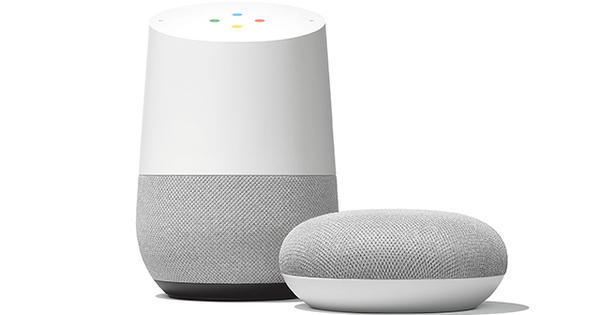Apple gave the world the iPhone, the Mac, and OS X. What not everyone knows is that they are also responsible for the breakthrough of a number of technologies that are used by almost every PC builder today.
If there is one company that is imitated a lot and often, it is Apple. But they can do it themselves too. Jobs and associates have an undeniable talent for picking up cool ideas and executing them superbly, after which all competitors are allowed to try frantically to match that success. Below, we'll discuss five examples of technologies that Apple has made ubiquitous today—while they often didn't even invent them themselves.
1. Trackpads on Notebooks
In the early 1990s, notebooks were still equipped with a trackball in order to integrate the functionality of a mouse into a portable device that could also be used on your lap. That came to an end in May 1994, when Apple released its PowerBook 500 series with a 5cm (diagonal) square trackpad. Apple's trackpad was dubbed a "breakthrough in pointing technology," and it wasn't long before the trackball was chasing the Dodo. While there are still manufacturers who stick to the even more compact solution of the pointing stick (also known as TrackPoint, PointStick, TrackStick or simply 'the nipple'), the trackpad has since become by far the most widely used mouse alternative for notebooks. Apple itself has since expanded the functionality of the standard trackpad with multitouch functionality for all their recently released notebooks.
2. The mouse
The mouse seems as indispensable to a computer today as a keyboard, but before Apple launched the thing with the Mac in 1984, the mouse was completely unknown. It is typical of Apple that it did not invent the mouse itself, but that it was the first company to make it accessible to the general public. Actually, the first computer to ship with a mouse was a 1984 Xerox workstation. But the whole concept didn't catch on until Apple equipped its first Macintosh with it.
Surprisingly, for a company responsible for the breakthrough of the most popular computer input device ever (after the keyboard), Apple does have a dubious reputation. In particular, the fact that Apple has stuck to one-button mice for years has attracted a lot of criticism. It wasn't until the introduction of the Mighty Mouse in 2005 that Apple itself changed its mind. Since then, Mac fans can also right-click with genuine Apple devices.
3. The Graphical User Interface
Most people under 25 don't know any better than that a computer has a GUI, but there was a time when the idea of working with windows on a computer screen was still a new and innovative concept. The roots of the graphical user interface are once again with Xerox at the Palo Alto Research Center. But like the mouse, it was Apple that first came up with a graphical user interface suitable for the general public: the Lisa computer was equipped with it in 1983, and the Mac in 1984 in particular brought a real breakthrough. Apple discovered the GUI after Steve Jobs visited Xerox PARC in 1979, after buying Xerox stock in 1979. While it's alleged that he stole the idea for a GUI from Xerox, Apple's interpretation added a whole lot of new functionality now ubiquitous in a modern interface: drag-and-drop, double-click, and pull-down menus, for example. The menu bar at the top of the screen is also an Apple invention.
The breakthrough of the graphical user interface marked a turning point in the history of computer technology, so it's no surprise that Apple quickly became embroiled in two lawsuits over patents over the GUI. In 1988, Apple sued Microsoft because Microsoft Windows was a copy of the Mac GUI. Apple lost that lawsuit. Less well-known is that in 1989 Xerox in turn sued Apple for allegedly infringing a number of Xerox patents. But that case was dismissed by the court because Xerox would have waited too long with the charges.
4. Multi-Touch
Until the introduction of the iPhone in 2007, most consumers probably had no idea what multitouch technology was, except for the few who might have seen some demos on the Internet. But since the release of the iPhone, every self-respecting phone manufacturer has been trying to ensure that their phone can be operated with multiple fingers on a touch-sensitive screen. Better yet, with the success of the iPhone, multitouch is appearing in more and more devices, such as the trackpads on the latest Apple notebooks and even on larger devices like HP's multitouch monitor. Apple is determined to get the most out of multitouch technology, as evidenced by the fact that the upcoming iPad should be able to register as many as 11 (!?) different touches at once.
To be clear: contrary to what is claimed, Apple is not the inventor here either. It brought the tech in-house by buying a company called Fingerworks in 2005. And those weren't the inventors either: that honor goes to the University of Toronto, where the first working multi-touch interface was built in 1982. But it was again Apple, with its iPhone, that made multitouch suddenly so popular.
5. The smartphone accelerometer
Accelerometers had been used in countless ways for many years before Apple decided to include one in their iPhone. In fact, there has been an accelerometer in their laptops since 2005, albeit only for detecting that someone dropped the device so that the device could protect the hard drive from data loss on impact. But when you talk to anyone about accelerometers these days, in most cases it's about an iPhone. There are already hundreds of games and applications that specifically take advantage of that feature, and it certainly contributed to the ridiculous popularity of that phone.
You could say that Apple is in fact responsible for the concept of the entire modern smartphone. The influence the iPhone has had on the smartphone market is undeniable. The iPhone has become a standard by which all modern smartphones are measured. Even the appearance of the smartphones that have appeared since then is suspiciously similar to that of the iPhone in nine out of ten cases. Multitouch is ubiquitous, they all have a screen about 9 centimeters diagonally, it's almost uncanny how even the design follows the iPhone - and increasingly they also have an accelerometer.
6. USB
Today we all use USB ports to connect anything and everything to our PCs, and that's how USB was meant to be. But it wasn't until Apple introduced an iMac with USB in 1998 that it really began to be accepted as the standard. Spicy, when you consider that USB was originally developed by a consortium of companies such as Microsoft, Intel, IBM and Compaq. But the first iMac was the first computer to ship solely with USB ports, marking a final goodbye to other famous ports like ADB (the Apple Desktop Bus) and SCSI. Until then, other computers, if they were equipped with USB ports, always came with other connectors such as serial and parallel ports. That stood in the way of the emergence of USB as a standard. In fact, the iMac became one of the key drivers for developers to prioritize the USB port over the other older solutions. Today, every computer comes standard with USB ports, and we can thank the iMac for that.
And another thing Apple can do well: say goodbye
While Apple is clearly more than willing to embrace new technologies, one of the company's strengths is its willingness to say goodbye to technology they see no future in, even if it doesn't seem obvious to everyone. For example, when Apple launched the Bondi Blue iMac in 1998, the lack of a floppy disk drive caused quite a stir. “So how should users exchange data between different machines?” the critics asked. But Apple had already foreseen that the exchange of data via portable media would give way to a new way of transferring data: the Internet. They were perhaps very much ahead of their time with that, but thanks in part to the rise of USB sticks, they got away with it nicely – and almost every PC builder has now followed them.

